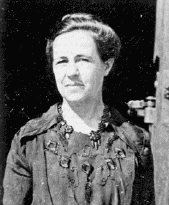<Back to Index>
- Astronomer Antonia Coetana de Paiva Pereira Maury, 1866
- Bluesman Eddie James "Son" House, Jr., 1902
- Elector of Saxony Maurice, 1521
PAGE SPONSOR
ΕΚΛΟΓΕΣ 2012
Τυπώστε και Ψηφίστε

Antonia Coetana de Paiva Pereira Maury (March 21, 1866 – January 8, 1952) was an American astronomer who published an important early catalog of stellar spectra.
Antonia Maury was born in Cold Spring, New York. With the exception of the surname Maury,
her full name is the same as an ancestor. Her father and mother were
Rev. Mytton Maury and Virginia Draper. Reverend Mytton Maury is a
descendant of Reverend James Maury who fathered 13 children. They are all related to one another and to Commander Matthew Fontaine Maury of the United States Naval Observatory and his large family. She was the granddaughter of John William Draper and niece of Henry Draper, both pioneering astronomers.
Antonia Maury was educated at Vassar College, graduating in 1887. She was employed at Harvard College Observatory (HCO), where she observed stellar spectra and published a catalogue of classifications in 1897 (Spectra of Bright Stars Photographed with the 11-inch Draper Telescope as part of the Henry Draper Memorial, Annals of Harvard College Observatory, vol. 28, pp. 1 - 128).
When the director of HCO at the time, Edward Charles Pickering, disagreed with Maury’s system of classification and explanation of differing line widths, she left HCO. However, Ejnar Hertzsprung realized the value of her classifications and used them in his system of identifying giant and dwarf stars.
In 1908, Antonia Maury returned to HCO where she remained for many years. Her most famous work there was the spectroscopic analysis of the binary star Beta Lyrae, published in 1933 (The Spectral Changes of Beta Lyrae, Annals of Harvard College Observatory, vol. 84, no. 8).
In 1943, Antonia Maury was awarded the Annie Jump Cannon Award in Astronomy by the American Astronomical Society. The lunar crater Maury is co-named after her.